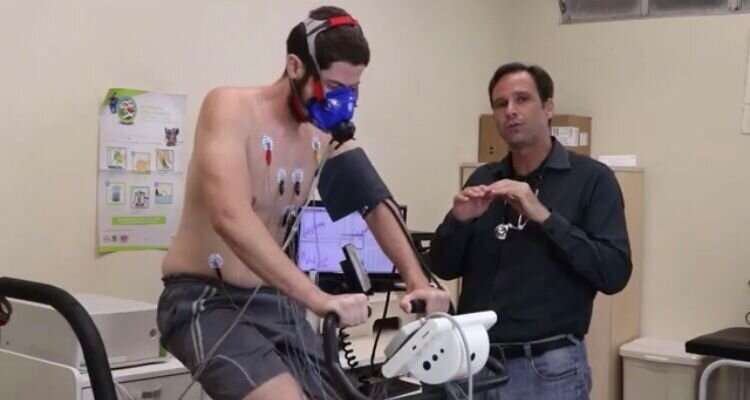Cardiopulmonary exercise testing can be used for early detection of respiratory disorders in the obese

Cardiopulmonary exercise testing (CPET), also known as ergospirometry, can be used for early detection of respiratory disorders in overweight and obese individuals. This is the main finding of a study by Brazilian researchers who set out to assess the influence of obesity on the physiological responses obtained in CPET.
CPET combines a conventional ergometric test with analysis of expelled air to obtain measurements of pulmonary oxygen uptake (VO2), carbon dioxide production (VCO2), respiratory rate, and pulmonary ventilation. It determines the level of aerobic conditioning and is indicated for initial assessment in physical exercise programs, both in clinical practice and for amateur or high-performance athletes.
The study showed that the main ventilatory responses were unaltered in obese volunteers. For example, the ratio of minute ventilation (VE, the volume of air exhaled in one minute) to VCO2, averaged 25.4 for the obese group and 25.6 for the non-obese control group. The ratio corresponds to the quantity of ventilation used to eliminate a given amount of carbon dioxide during the test and is considered an indicator of respiratory efficiency.
The finding that obesity did not influence this variable means abnormal values can be useful for early detection of respiratory disorders and can point to potential problems before symptoms appear, regardless of obesity.
However, as expected, obesity impaired performance in almost all of the many maximal and submaximal variables analyzed in the study. The most influenced were the cardiovascular, metabolic, and gas exchange variables.
An article reporting the study is published in PLOS ONE. Most of the authors are researchers in the Department of Human Movement Sciences at the Federal University of São Paulo (UNIFESP) in Santos. The study was supported by FAPESP. Three physicians affiliated with the Angiocorpore Institute of Cardiovascular Medicine in Santos also participated.
"CPET is insufficiently used for obese patients. It can bring to light many potential issues and has substantial diagnostic and pre-diagnostic potential, which isn't adequately explored. Our study shows that if ventilatory efficiency is altered, the reason is highly likely to be an incipient respiratory disorder, rather than a consequence of obesity," said Victor Zuniga Dourado, head of UNIFESP's Epidemiology and Human Movement Laboratory (EPIMOV) and principal investigator for the study.
The test does not diagnose a specific disorder or disease, Dourado explained, but can be used for early detection of exercise intolerance and to help identify its causes, so that the patient can be referred to a specialist for a more precise diagnosis.
More information: Bárbara de Barros Gonze et al, Dynamic physiological responses in obese and non-obese adults submitted to cardiopulmonary exercise test, PLOS ONE (2021). DOI: 10.1371/journal.pone.0255724





















